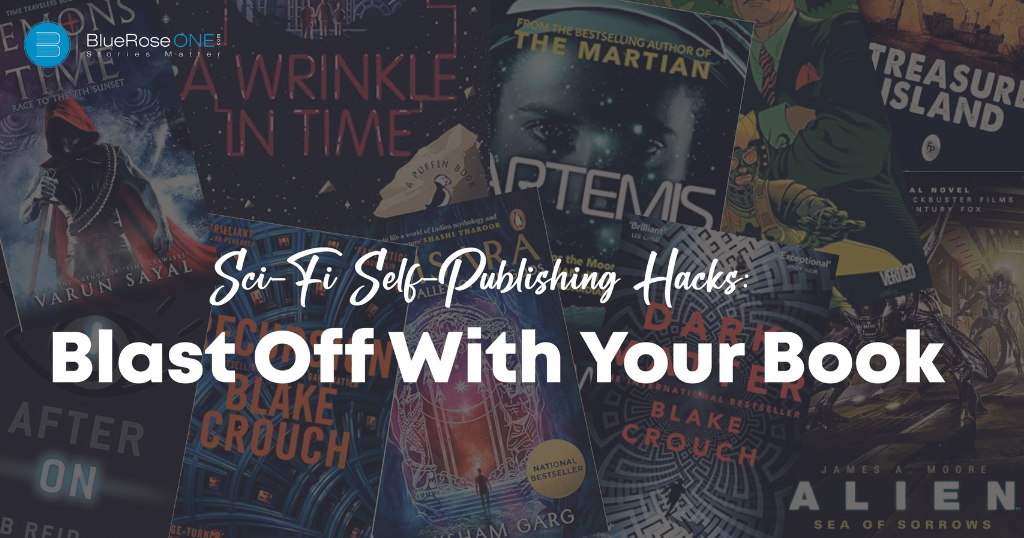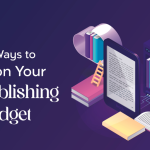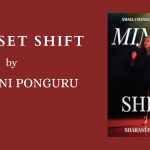Science fiction authors are traversing the enormous field of self-publishing to share their fascinating worlds with eager fans. This site is your mission control if you’re a sci-fi writer preparing to launch your novel into the literary cosmos. Join us as we investigate self-publishing methods that will take your sci-fi masterpiece to new heights and attract the attention of people from all over the cosmos.
- The Cosmic Blueprint: Crafting a Captivating Sci-Fi Manuscript
- The Launchpad: Preparing Your Manuscript for Self-Publishing
- Navigating the Interstellar Marketplace: Publishing Platforms
- The Quantum Connection: Engaging with Your Readers
The Cosmic Blueprint: Crafting a Captivating Sci-Fi Manuscript
- Embrace the Unexplored Frontiers: Unique Concepts and Ideas
Diving into the cosmos of imagination is the hallmark of exceptional science fiction. Authors are tasked with transcending the ordinary and ushering readers into uncharted territories. By introducing concepts that challenge conventions, authors create mental landscapes that captivate and intrigue. Consider Philip K. Dick’s “Do Androids Dream of Electric Sheep?” where he explores the blurred line between humans and artificial intelligence, challenging societal norms and perceptions.
Crafting a unique blend of technology, society, and speculative science is crucial. In William Gibson’s “Neuromancer,” he merges cyberpunk aesthetics with a dystopian future, presenting a world where artificial intelligence, virtual reality, and corporate intrigue converge. This fusion sets the novel apart, creating an immersive experience for readers. - Develop multi-dimensional characters.
In the vast expanse of science fiction, characters serve as celestial bodies, guiding readers through the narrative cosmos. Forging characters with depth and complexity involves exploring their psychological and emotional facets. In Isaac Asimov’s “Foundation” series, Hari Seldon is not merely a scientist but a visionary navigating the complexities of predicting the future.
Crafting relatable protagonists and compelling antagonists is equally vital. Consider Frank Herbert’s “Dune,” where Paul Atreides undergoes a profound transformation, resonating with readers on a personal level. The antagonist, Baron Harkonnen, is not a mere villain but a character with intricate motives, adding layers to the narrative. - Master the Art of World-Building
Constructing immersive and believable worlds is the gravitational force holding a sci-fi narrative together. In Arthur C. Clarke’s “2001: A Space Odyssey,” the meticulously detailed portrayal of space travel and encounters with extraterrestrial intelligence creates a world that feels tangible and awe-inspiring.
Developing the rules that govern your universe, from physics to culture, establishes the framework of the narrative. In Ursula K. Le Guin’s “The Left Hand of Darkness,” the intricate exploration of a planet with a unique biology and culture not only adds depth but also serves as a commentary on gender and societal norms.
Ensuring consistency in world-building is paramount. Inconsistent rules can disrupt the reader’s suspension of disbelief. Neal Stephenson’s “Snow Crash” maintains consistency in its depiction of a cyberpunk future where the virtual and physical realms seamlessly coexist.
In conclusion, these elements form the celestial coordinates for a captivating sci-fi journey where unexplored frontiers, multi-dimensional characters, and meticulously crafted worlds converge to create a literary universe that beckons readers to explore beyond the ordinary.
The Launchpad: Preparing Your Manuscript for Self-Publishing
- Editing Warp Drive: Polishing Your Manuscript
Engaging professional editors is akin to fine-tuning the warp drive of your spacecraft before launching into the literary universe. These experts ensure your manuscript is free from grammatical errors, plot inconsistencies, and other editorial hiccups. For instance, in Andy Weir’s “The Martian,” meticulous editing ensures scientific accuracy, enhancing the overall credibility of the narrative. Additionally, considering beta readers provides diverse feedback, helping authors identify blind spots and areas for improvement. Their input serves as a crucial navigational tool in shaping a manuscript to its full potential. Polishing dialogue and narrative flow, as seen in the works of Octavia Butler, elevates the reading experience, captivating the audience with seamless prose and engaging storytelling. - Eye-Catching Cover Design: The Visual Wormhole
Investing in a professional cover designer is a warp-speed jump into grabbing readers’ attention. A cover is the visual wormhole that transports potential readers into the heart of your sci-fi tale. Consider the cover of William Gibson’s “Neuromancer,” designed by Rick Berry. Its cyberpunk aesthetics not only align with genre expectations but also stand out, inviting readers into a visually compelling world. Aligning your cover with genre expectations ensures that your book is recognisable to its intended audience, while incorporating unique visual elements helps it stand out in a crowded galaxy of bookshelves. - Galactic Synopsis: Crafting an Irresistible Book Blurb
The galactic synopsis, or book blurb, is the gravitational force that pulls readers into your literary orbit. Crafting a compelling book blurb requires teasing without revealing too much, much like the blurb for Arthur C. Clarke’s “2001: A Space Odyssey.” It hints at the discovery of a mysterious monolith without giving away the entire plot. Emphasising the stakes and unique elements of your story, as seen in the blurb for Philip K. Dick’s “Do Androids Dream of Electric Sheep?” heightens curiosity. The mention of a bounty hunter chasing rogue androids sets the stage for a narrative full of intrigue and moral ambiguity. In essence, the book blurb serves as the gravitational pull, enticing potential readers with just enough information to spark their curiosity and propel them into the cosmic adventure your sci-fi tale promises.
Navigating the Interstellar Marketplace: Publishing Platforms
- Choose the right publishing platform.
Selecting the right publishing platform is the launchpad for your sci-fi odyssey. Platforms like Amazon Kindle Direct Publishing (KDP), BlueRoseONE, and many more offer a vast expanse for independent authors. Consider the example of Hugh Howey’s “Wool.” Originally self-published on Amazon, its success led to a major publishing deal. Assessing both eBook and print options is crucial. Print-on-demand services like IngramSpark provide a tangible format for readers who prefer physical copies. Researching the advantages and limitations of each platform is akin to navigating through the galaxy of publishing options. Analysing success stories and challenges on platforms like Wattpad, known for discovering new talent, can guide your decision-making process. - Pricing Strategies: Finding the Interstellar Sweet Spot
Crafting pricing strategies requires a keen understanding of the interstellar market. Researching pricing trends in the sci-fi genre reveals patterns that can inform your decision. Consider the success of Andy Weir’s “The Martian,” which was initially offered as a serialised story on his website for free before gaining immense popularity. Utilising promotional tools like Kindle Countdown Deals on Amazon allows for strategic discounts, attracting readers while maintaining profitability. Experimenting with pricing is the spacecraft’s trajectory towards finding the optimal balance between profit and visibility. Authors like Isaac Asimov, known for prolifically publishing short stories, often experimented with pricing models to gauge reader interest and maximise reach. - Galvanise Your Launch: Build Pre-Launch Buzz
Building pre-launch buzz is the cosmic energy that propels your book into orbit. Leveraging social media, author websites, and mailing lists to build anticipation is exemplified by the marketing campaign for Ernest Cline’s “Ready Player One.” Exclusive sneak peeks or early access offerings to dedicated followers create a sense of community and anticipation. Collaborating with book bloggers and influencers amplifies your launch, as seen with the coordinated efforts for N.K. Jemisin’s “The Fifth Season.” Reviews and features from influential sources generate momentum. Harnessing the power of pre-launch excitement ensures that your book enters the literary cosmos with a gravitational pull, drawing readers into the gravitational force of your sci-fi masterpiece.
The Quantum Connection: Engaging with Your Readers
- Harness the power of author branding.
Crafting a professional author website serves as the mission control centre for your literary endeavors. Consider the website of Neil Gaiman, adorned with a sleek design and comprehensive information, offering a centralised hub for readers. Establishing a consistent author brand across social media is akin to aligning the stars. Pierce Brown, author of the “Red Rising” series, maintains a thematic consistency in his social media presence, reinforcing the brand he has built through his novels. Engaging with your audience and creating a sense of community, as exemplified by Becky Chambers, allows readers to feel connected to the author beyond their books. This sense of camaraderie fosters loyalty and transforms readers into dedicated fans. - Reader Magnetism: Reviews and Feedback
Encouraging early readers to leave reviews is the gravitational pull that attracts more readers. Authors like Martha Wells, known for the “Murderbot Diaries,” often leverage reader reviews to build credibility and attract a wider audience. Participating in online communities and forums related to sci-fi literature is the hyperdrive propulsion for author-reader interaction. N.K. Jemisin, engaging with readers on platforms like Goodreads, creates a dynamic space for discussions and feedback. Embracing constructive criticism and using it to enhance future works is exemplified by the evolution of Brandon Sanderson’s writing style based on reader feedback. The magnetic force of reader magnetism not only attracts but also sustains a loyal audience. - The Sequel Signal: Planning for the Future
Developing a series strategy, if applicable, is the warp drive for a sustained authorship journey. James S.A. Corey’s “The Expanse” series strategically unfolds a multi-book narrative, keeping readers invested in the overarching story. Teasing upcoming projects maintains reader interest, as seen in the periodic updates from Ann Leckie about her upcoming works, creating anticipation among her fanbase. Considering periodic promotions to reinvigorate interest in your existing works is akin to launching booster rockets. Hugh Howey’s periodic promotions of his “Silo” series on platforms like BookBub rejuvenate interest and introduce the series to new readers, extending the longevity of his backlist. Planning for the future ensures a trajectory of success in the ever-expanding universe of sci-fi literature.
As a sci-fi author, your journey doesn’t end with the publication of your book; it’s a launch into an ever-expanding universe of possibilities. Implement these self-publishing hacks and watch as your literary spacecraft navigates the celestial shelves of readers’ imaginations. Embrace the unknown, engage with your audience, and continue to explore the uncharted territories of your creative universe. Safe travels, fellow wordsmith, as you embark on this cosmic journey of self-publishing success.
Publish your book with BlueRoseONE and become a bestselling author. Don’t let your dream of becoming an author fade away, grab the opportunity now and publish your book – be it fiction, non fiction, poetry or more.
















